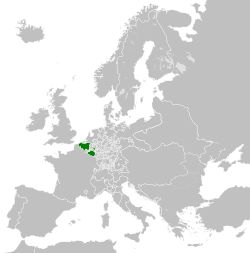HD 74156
HD 74156| 관측 데이터 Epoch J2000.0 이쿼녹스 J2000.0 | |
|---|---|
| 별자리 | 히드라 |
| 우측 상승 | 08h 42m 25.122s[1] |
| 탈위임 | +04° 34′ 41.15″[1] |
| 겉보기 크기(V) | +7.614[2] |
| 특성. | |
| 스펙트럼형 | G0V |
| U-B색지수 | ? |
| B-V색지수 | 0.581[2] |
| V-R 색지수 | 0.4 |
| R-I 색지수 | 0.2 |
| 변수형 | "없음" |
| 아스트로메트리 | |
| 방사 속도(Rv) | +3.7km/s |
| 적정운동(μ) | RA:24.83±0.64[1]mas/yr Dec.:−200.90±0.46[1]mas/yr |
| 시차(시차) | 17.4242 ± 0.0247 마스[3] |
| 거리 | 187.2 ± 0.3 ly (57.39 ± 0.08 pc) |
| 절대치수(MV) | +3.57 ± 0.15 |
| 세부 사항 | |
| 미사 | 1.24[2] M☉ |
| 반지름 | 1.64 ± 0.19[2] R☉ |
| 루미도(골수계) | 3.037 ± 0.485[2] L☉ |
| 표면 중력(log g) | 4.4 ± 0.15[2] cgs |
| 온도 | 5960 ± 100[2] K |
| 금속성 [Fe/H] | +0.13[2] 덱스 |
| 회전 속도(v sin i) | 4.3km[2]/s |
| 나이 | 3.7 ± 0.4[2] Gyr |
| 기타 지정 | |
| 데이터베이스 참조 | |
| 심바드 | 자료 |
HD 74156은 태양계에서 210광년 떨어진 하이드라 별자리에 있는 황색 왜성(스펙트럼형 G0V)이다.[1]이 행성은 두 개의 거대한 행성에 의해 궤도를 도는 것으로 알려져 있다.
별
이 별은 태양보다 24% 더 크고 64% 더 크다.총광도는 우리 태양의 2.96배, 온도는 5960K이다.[2]이 별의 나이는 37억년으로 추정되는데,[2] 철분이 풍부해 태양보다 금속성이 1.35배나 높다.
행성계
2001년 4월, 두 개의 거대한 행성이 그 별 주위를 돌고 있다고 발표되었다.[4][5]첫 행성 HD 74156 b는 수성보다 더 가까운 거리에서 항성을 공전하며, 극도로 편심된 궤도를 돌고 있다.두 번째 행성 HD 74156 c는 긴 기간 동안 거대한 행성(목성 질량의 최소 8배)으로, 항성을 3.90 천문단위 반축으로 타원 궤도로 공전하는 행성이다.[2]
| 동반자 (별에서 순서대로) | 미사 | 세미마조르 축 (AU) | 궤도 주기 (일) | 편심성 | 기울기 | 반지름 |
|---|---|---|---|---|---|---|
| b | >1.778±0.020 MJ | 0.2916±0.0033 | 51.6385±0.0015 | 0.6380±0.0061 | — | — |
| c | >7.997±0.095 MJ | 3.820±0.044 | 2448.9±5.5 | 0.3829±0.0080 | — | — |
제3행성의 주장
궤도가 일행성이며 최소 질량과 동일한 질량을 갖는다는 가정 하에 시스템의 2개의 행성 구성을 고려할 때, 알려진 두 행성의 궤도 사이의 0.9와 1.4AU 사이의 영역에서 토성 질량 행성이 추가로 안정적일 것이다.[7]행성계가 기존 행성들의 궤도 사이에 추가적인 행성을 지원할 수 없는 방식으로 형성된다고 예측하는 "포장된 행성계" 가설 하에서, 그 간격은 행성을 유치할 것으로 예상된다.
2007년 9월, 최소 0.396의 목성 질량을 가진 제3의 행성이 b행성과 c행성 사이를 편심궤도로 선회하고 있다고 발표되었다.[8]이전에 추가적인 행성에 대해 안정적이라고 알려진 행성계의 한 지역에서 궤도를 선회하는 이 행성은 "포장된 행성계" 가설을 확인하는 것으로 보였다.[9]그러나, 로마 V. 발루브는 이 발견에 의문을 제기해, 관측된 변동은 데이터의 연간 오류 때문일 수 있음을 시사했다.[10]Hubi-Eberly 망원경을 사용한 후속 검색도 행성을 확인하지 못했으며 [11]HIREs 도구를 사용하여 얻은 추가 데이터는 행성의 존재와 강하게 모순된다.[2]
참고 항목
참조
- ^ a b c d e van Leeuwen, F. (2007). "Validation of the new Hipparcos reduction". Astronomy and Astrophysics. 474 (2): 653–664. arXiv:0708.1752. Bibcode:2007A&A...474..653V. doi:10.1051/0004-6361:20078357. S2CID 18759600.Vizier 카탈로그 항목
- ^ a b c d e f g h i j k l m n Meschiari, Stefano; et al. (2011). "The Lick-Carnegie Survey: Four New Exoplanet Candidates". The Astrophysical Journal. 727 (2). 117. arXiv:1011.4068. Bibcode:2011ApJ...727..117M. doi:10.1088/0004-637X/727/2/117. S2CID 59065004.
- ^ Brown, A. G. A.; et al. (Gaia collaboration) (2021). "Gaia Early Data Release 3: Summary of the contents and survey properties". Astronomy & Astrophysics. 649: A1. arXiv:2012.01533. Bibcode:2021A&A...649A...1G. doi:10.1051/0004-6361/202039657. S2CID 227254300. 이 소스에 대한 Gaia EDR3 레코드 VizieR.
- ^ "Exoplanets: The Hunt Continues!" (Press release). Garching, Germany: European Southern Observatory. April 4, 2001. Retrieved December 27, 2012.
- ^ Naef, Dominique; Mayor, Michel; Beuzit, Jean-Luc; Perrier, Christian; Queloz, Didier; Sivan, Jean-Pierre; Udry, Stéphane (2004). "The ELODIE survey for northern extra-solar planets. III. Three planetary candidates detected with ELODIE" (PDF). Astronomy and Astrophysics. 414 (1): 351–359. arXiv:astro-ph/0310261. Bibcode:2004A&A...414..351N. doi:10.1051/0004-6361:20034091.
- ^ Feng, Y. Katherina; et al. (2015). "The California Planet Survey IV: A Planet Orbiting the Giant Star HD 145934 and Updates to Seven Systems with Long-period Planets". The Astrophysical Journal. 800 (1). 22. arXiv:1501.00633. Bibcode:2015ApJ...800...22F. doi:10.1088/0004-637X/800/1/22. S2CID 56390823.
- ^ Sean N. Raymond; Rory Barnes (2005). "Predicting Planets in Known Extrasolar Planetary Systems. II. Testing for Saturn Mass Planets". The Astrophysical Journal. 619 (1): 549–557. arXiv:astro-ph/0404211. Bibcode:2005ApJ...619..549R. doi:10.1086/426311. S2CID 13015545.
- ^ Jacob L. Bean; et al. (2008). "Detection of a Third Planet in the HD 74156 System Using the Hobby-Eberly Telescope". The Astrophysical Journal. 672 (2): 1202–1208. arXiv:0709.1656. Bibcode:2008ApJ...672.1202B. doi:10.1086/523701. hdl:2152/35107. S2CID 15507937.
- ^ Barnes, Rory; et al. (2008). "The Successful Prediction of the Extrasolar Planet HD 74156 d". The Astrophysical Journal Letters. 680 (1): L57–L60. arXiv:0804.4496. Bibcode:2008ApJ...680L..57B. doi:10.1086/589712. S2CID 14070540.
- ^ Baluev, Roman V. (2008). "Accounting for velocity jitters in planet search surveys". Monthly Notices of the Royal Astronomical Society. 393 (3): 969–978. arXiv:0712.3862. Bibcode:2009MNRAS.393..969B. doi:10.1111/j.1365-2966.2008.14217.x. S2CID 15170720.
- ^ Wittenmyer, Robert A.; Endl, Michael; Cochran, William D.; Levison, Harold F.; Henry, Gregory W. (2009). "A Search for Multi-Planet Systems Using the Hobby-Eberly Telescope". The Astrophysical Journal Supplement. 182 (1): 97–119. arXiv:0903.0652. Bibcode:2009ApJS..182...97W. doi:10.1088/0067-0049/182/1/97. S2CID 7422668.
외부 링크
- "Notes for star HD 74156". The Extrasolar Planets Encyclopaedia.
- 애리조나 대학교 루나 앤 플래닛 랩의 로리 반스와 리처드 그린버그의 외계 행성 상호작용


